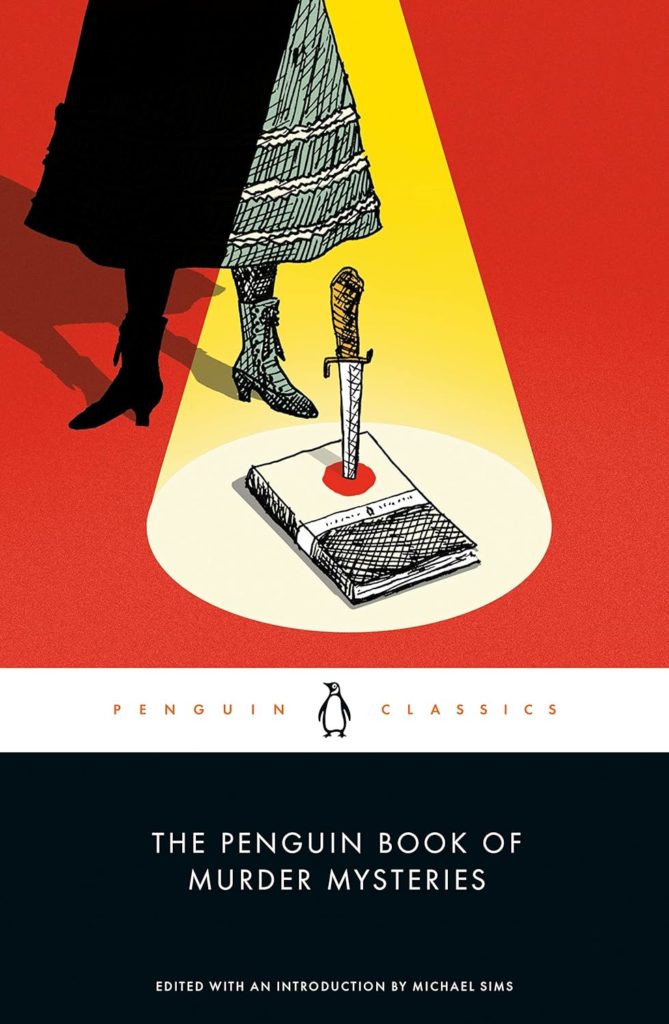 In many ways, the deck was stacked for this one. Sims has edited two other “Penguin Book of” anthologies, as well as a number of anthologies centered around Victorian stories for Bloomsbury. And he has written wonderfully about Sherlock Holmes and Arthur Conan Doyle. Basically, our literary tastes overlap exactly and I am predisposed enjoy anything he has published. Nevertheless, I am pleased Sims has pulled together another interesting collection of short stories, most of which I had never heard of before.
In many ways, the deck was stacked for this one. Sims has edited two other “Penguin Book of” anthologies, as well as a number of anthologies centered around Victorian stories for Bloomsbury. And he has written wonderfully about Sherlock Holmes and Arthur Conan Doyle. Basically, our literary tastes overlap exactly and I am predisposed enjoy anything he has published. Nevertheless, I am pleased Sims has pulled together another interesting collection of short stories, most of which I had never heard of before.
Of note was “Negative Evidence” (1888), which appears to be the first detective story that uses photography as part of the evidence to solve the crime. Though the mystery itself is not the most intricate, it’s fascinating to see the formative era in the steps taken by the detective and photographer.
The pendulum of the clock in the tower swung backward and forward with dull, mechanical, despairing tick, tick. It had no more interest in its work than a felon at the oar. the sun noiselessly continued its imperceptible, invincible triumph towards the west. It did not move because of any law that boud it, but because of its slowness to remain. ~Pg. 156
I’d read only one other of Mary Fortune’s stories, but I loved it. She wrote stories set in her eventual home of Australia. “The Red Room,” a tale of betrayal in the bush (with a surprising ending), is included here.
“The Judgement of Conscience” is just one of the stories included in the book The Female Detective (1864). The narrator is one Mrs. G. is fastidious, whip-smart, and no nonsense. She insists, “Criminals are both masculine and Feminine — indeed my experience tells me that when a woman becomes a criminal she is far worse than the average of her mail companions, and therefore it follows that the necessary detectives should be of both sexes.” This story showcases her ingenuity, with a nod to one of Poe’s Dupin tales.
“Guilty or Not Guilty?” is written as a first-person recollection from a former Scotland Yard policeman. Like most of these types of stories in the era, they were very loosely (if at all) based on fact, but instead used the frame of law enforcement official as a literary device.
Perhaps my favorite in this collection is “The Statement of Jared Johnson” (1899) by Geraldine Bonner. It reads like a hard-boiled detective story in a pulp magazine.
It’s a pretty hard thing to go over in cold blood, but I want the public to hear my version of the story. … My name is Jared Johnson and until I was arrested on the 23rd of last December, I was the janitor of the Fremont Building, and had been so for the two years past. … The Fremont had been a fine, well built house in the beginning, and even when I came into it was in good repair. But it was old-fashioned, without elevators or electric lights, and the offices rented for low prices. The top story had been used as a photography gallery, and had long glass skylights in the ceiling. But that was before my time. ~Pg. 221
I can hear this as the opening voiceover to a deep contrast film noir wherein a humble working man has to prove his innocence despite the strange evidence stacked against him. (Someone, please make this so I can watch it.)
All told, the collection contains more than 300 pages of murder mysteries waiting to be rediscovered.
Contents:
- “The Hand and Word,” by Gerald Griffin
- “Guilty or Not Guilty?” by Thomas Waters (pseud.)
- “Hanged by the Neck,’ by Charles Martel (pseud.)
- “The Dead Child’s Leg,” by James McLevy
- “The Judgement of Conscience,” by Andrew Forrester, Jr. (pseud.)
- “The Red Room,” by Mary Fortune
- “Negative Evidence,” by Richard Dowling
- “The Sheriff’s Children,” by Charles W. Chesnutt
- “The Murder at Troyte’s Hill,” by C.L. Pirkis
- “The Statement of Jared Johnson,” by Geraldine Bonner
- “A Point in Morals,” by Ellen Glasgow
- “The Case of the Pool of Blood in the Pastor’s Study,” by Auguste Groner
- “An Intangible Clue,” by Anna Katharine Green
My thanks to Becca at Penguin Classics for the bound galley to review.
Publisher: Penguin Classics (November 21, 2023)
Language: English
Paperback: 352 pages
ISBN-10: 0143137530
